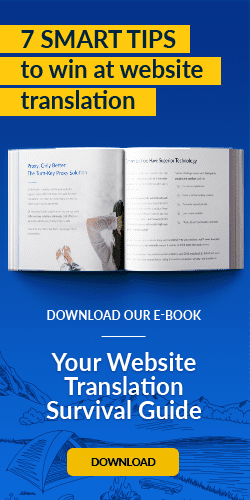Here’s the scenario: You’ve got a memorable marketing campaign, with a punchy slogan that’s producing a strong ROI in your flagship market.
But when you roll out the slogan to global markets in different languages, revenues stall. The culprit? Weak translation. Suddenly, you discover you've joined the ranks of other companies that have alienated customers with lousy localization. You're among those that have accidentally invited consumers to check out the "corpse" in their cars, develop "diarrhea" from their beer, "fly naked" on their airline, or bank with a financial institution that "does nothing."
Mistakes like that are embarrassing, potentially offensive and costly to fix. It's much better to avoid translation mistakes from the start. Here's how.
No Brand Is Immune
Business can-and have-spent millions of dollars to correct a single translation error. Add to that time, internal resources and brand-reputation costs, and you've got one expensive problem on your hands.
The fact is, any business can make a translation faux pas if they're not careful. Brands like HSBC, KFC, American Motors, Ford and others have found themselves cleaning up translation messes.
To avoid such mistakes, brands must take a savvy, well-planned approach to translating their content for global markets. To ensure your brand messaging is deftly translated, follow these best practices for international business translation.
The fact is, any business can make a translation faux pas if they’re not careful.
Employ Skilled Translation Experts
This should be a given, but problems with translation often begin with the people employed to do the work. Hire translators who:
- Know or can get up to speed rapidly on your industry and your company
- Properly use localized words and phrases that are meaningful in a given market
- Can handle omnichannel content such as videos, dynamic PDFs, and third-party apps
- Optimize online content for SEO with localized keywords, hreflang tags and other metadata
Know the Region and Its Culture
Residents in many African nations speak Swahili. But that doesn't mean every African nation prefers to speak Swahili. The same goes for any other region that may share a language but can have regions with dynamic customs, cultures and language preferences.
Ensure that your translation team:
- Has local knowledge of the market so their translations will be culturally relevant
- Knows what is offensive and what isn’t in a given market
- Has the fluency to create translations that are authentic and believable
Understand Your Customer
It's not enough to translate words. It's not even enough to translate with regionalisms and local customs in mind. The best translations are crafted to reflect the individual demographics, habits, preferences, and experiences of your target customers.
As you translate your content, remember:
- People who inhabit different demographics often have different ways of speaking, including dialects or use of local idioms. Your translations should reflect that.
- There are micro-communities (such as vintage car lovers) with larger communities (such as the U.S.). Know how to speak to the group within the group.
- Humor doesn’t always translate across markets, so approach it carefully.
Strive for Brand Consistency
Maintaining a consistent brand identity with clear values that don't change, no matter who you're speaking to, can go far in helping you gain traction globally. Put simply, this consistency across all markets matters to your customers.
To assure consistency in brand translations:
- Localize messaging, not brand identity. Maintain the same core values, no matter where you're doing business.
- Decide how your brand should sound—tone, style, philosophy—and then be sure translated content maintains that brand voice.
- Look for areas where your corporate identity and the cultural aspects of the market overlap—and use the overlaps to create authentic, relevant translated content.
Translating content for global markets doesn’t have to be complicated, draining or costly.
Deploy a Streamlined Translation Solution
Translating content for global markets doesn't have to be complicated, draining or costly. In fact, the easier you make the process, the easier it is to manage. That means you can focus on what matters most-the quality of your content and your customer.
Look for a best-in-class solution that:
- Automatically identifies new content and queues it for immediate translation
- Operates independently of your CMS
- Offers a dedicated translation team who become experts in your brand
- Provides a “translate once, pay once, use anywhere” approach to maximize the multichannel use of your translations and reduce costs
- Is fully turn-key so your team can easily manage its use
The Bottom Line
In the delicate realm of fostering customer trust, a poorly translated message can be more than just embarrassing. It can spell disaster for your brand. Use a world-class translation vendor that deploys best practices for global translations, with the savvy you need to build a truly international brand.
Last updated on May 18, 2018
